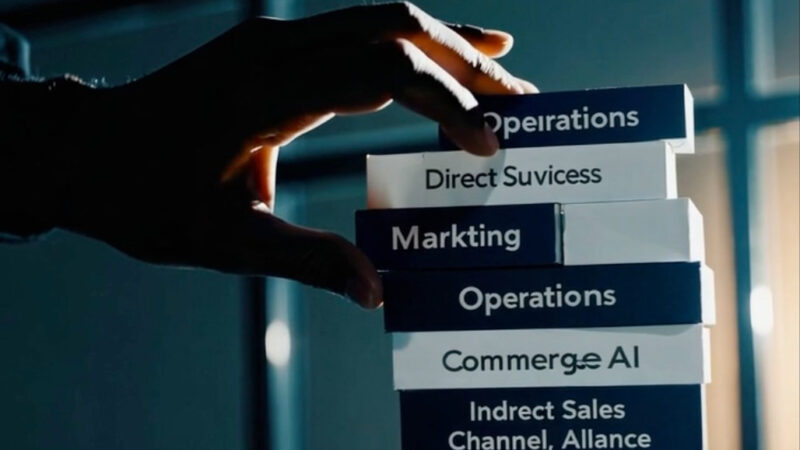Technical Support at an AI Company
Technical Support at Conversica (The Wins)
I had committed to 5 years, and even though I didn’t envision it taking as long as it did, we finally achieved most of what we originally set out to accomplish back in October 2019.
When I took the helm in 2019, Conversica’s Technical Support (TS) function was built for speed, not scale. Rooted in reactive support for a high-volume SMB base, the team was measured by ticket deflection, not customer impact. Fast forward to 2025, and TS had become a linchpin for our enterprise readiness and retention engine.
The transformation began with a mindset shift—from fixing issues to enabling outcomes. We restructured TS around issue resolution quality, first-response time, and most importantly, customer value preservation. Instead of being the team that dealt with noise, TS became the team that sustained ROI.
A major catalyst: the internal adoption of Conversica itself. Using our AI agents, we automated triage, pushed proactive alerts based on telemetry, and even had agents request feedback after key support interactions. This freed up human engineers to focus on root cause analysis and high-complexity escalations, rather than ticket traffic control.
We also introduced a tiered support model, aligned with customer segmentation. Strategic accounts received designated Technical Account Managers (TAMs) who bridged CS, Product, and Engineering. For smaller customers, we scaled service through contextualized knowledge bases, diagnostic bots, and automated follow-ups—cutting resolution time by 30%.
Lastly, TS wasn’t just supporting—it was signaling. Weekly synthesis of top issues fed directly into Product’s roadmap prioritization. That tight loop—Support → Insights → Action—meant fewer recurring bugs, better documentation, and smoother releases.
Technical Support – Strategic Headwinds (The Losses)
Despite our gains, we hit walls—particularly in scaling for enterprise expectations.
- Support ≠ Success
In many cases, customers blurred the lines between Technical Support and Customer Success. We hadn’t clearly defined boundaries. As a result, TS was asked to “go beyond the ticket,” handling onboarding gaps, configuration advice, and even AI performance questions. This diluted focus and stressed resourcing. - Global Support Wasn’t Global Enough
Our expansion into EMEA and LATAM was ahead of our support infrastructure. Time zones, language coverage, and localized content were reactive rather than proactive—leaving some international customers underserved and creating perception gaps in reliability. - Talent Depth Lagged Behind Tech Complexity
Our own evolution—from template bots to next-gen conversational AI—outpaced the capabilities of our frontline support team. Troubleshooting model accuracy isn’t the same as debugging a customer’s custom workflows and associated conversation rules. We didn’t upskill fast enough, and it showed in escalations and time-to-resolution for complex cases.
Advice From One CEO to Another – Building Technical Support for AI Scaleups
- Draw the Line Early
Don’t let support become a catch-all. Create clear charters for TS vs. CS vs. PS. Clarity protects quality—and employee sanity. - Invest in Tooling as Much as Talent
A good support engineer is gold—but one with automated diagnostics and CRM-integrated insights is platinum. Your stack matters. - Treat Support Tickets as Product Data
Support is the smoke before the fire. Design systems to capture trends early and route them into weekly product and engineering reviews. - Use Your Own Product Religiously
We used Conversica agents inside support, with a chat-based AI agent trained on all our product knowledgebase. It gave us leverage, credibility, and direct feedback on our own product—priceless. - Certify, Don’t Just Train
AI support isn’t generalist work. Build certification paths tied to product tiers, use cases, and verticals. Make expertise measurable. - Make TS Part of Your Strategic Narrative
Don’t bury support behind success. Showcase the function as a retention driver and trust builder—especially in board decks and investor narratives.
Conclusion
By 2025, Conversica’s Technical Support function was no longer the last line of defense—it was the silent engine sustaining long-term customer value. We moved from being measured by ticket volume to being celebrated for renewal impact. We weren’t perfect, but we were strategic.
The customer’s Technical Support team isn’t where customers go when things go wrong. It’s where they discover you’ll never leave them behind.
Strategy isn’t built in slides. It’s forged in hard conversations, late-night pivots, and the messy middle of execution. Every bold move we made as a company lived or died by the strength of our executive team. What follows isn’t just my perspective—it’s the collective experience of those who were in the trenches. The functional leaders who owned the inflection points. Who navigated the trials, learned from the misfires, and helped turn strategy into motion. This is what transformation really looks like—function by function, leader by leader, decision by decision.
- Executive Team Management
- Direct Sales
- Indirect Sales / Channel / Alliances
- Marketing
- Customer Success Management
- Technical / Customer Support
- Professional Services
- Product Management
- R&D
- Cloud Operations / DevSecOps
- Legal / Security / Compliance
- HR / People
- Finance
- International Operations
- Corporate Development
- Board Management
See “Conversica Executive ‘Dos and Don’ts’ Playbook”



